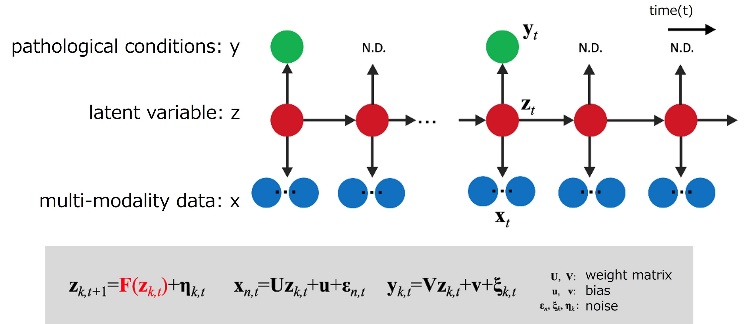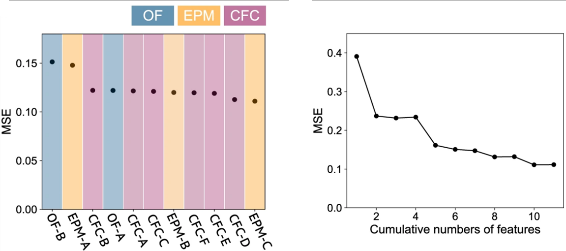Progress Report
Towards overcoming disorders linked to dementia based on a comprehensive understanding of multiorgan network[5] Elucidation of Inter-Organ Networks in Dementias by AI and Mathematical Research
Progress until FY2024
1. Outline of the project
Our aim is to understand inter-organ networks by constructing data-driven mathematical models in animal models combined with human data. AI and machine learning techniques will be exploited to use the limited data we have collected from living organisms effectively by removing noise from the data and filling in missing values. Also, we will develop machine learning algorithms that can integrate mathematical models with human data, which enable estimation of the condition of each organ and identification of the early stages of dementia using non-invasive and cost-effective measurements in the preclinical conditions of dementia.

2. Outcome so far
Machine Learning Model to Predict Early Indicators of Alzheimer’s Disease (AD)
AD involves progressive degeneration of neurons, preceded by accumulation of amyloid-β (Aβ) in the brain. Current methods to assess brain Aβ levels are costly and invasive, prompting a need for non-invasive biomarkers. A team led by Prof. Naoki Honda developed a machine learning model that quantitatively predicts Aβ accumulation from non-invasive markers. This approach could lead to novel AD biomarkers based on predictive modeling. (npj Systems Biology and Applications, 2023)


Development of a Method to Eliminate Batch Effects in Biological Data
Batch effects—non-biological variations caused by differences in measurement time, equipment, or reagent lots—are major challenges in multi-center and longitudinal studies. To address this, Prof. Naoki Honda and his team at Nagoya Univ developed a method using deep generative models to separate and correct these effects, improving biological data interpretation. (BioRxiv, 2025)

This method is expected to enable accurate evaluation of data collected from multiple sites and time-series data that reflect inter-organ relationships.
Estimation of Inter-Organ Relationships Using Optimal Transport Theory
Using a method that enables inference of inter-organ connections from multi-organ single-cell time-series data, we have begun to uncover links between the brain and other organs, including in dementia-related conditions.
3. Future plans
We will construct data-driven mathematical models for multimodal data obtained from animal models and preclinical cohorts for dementia to elucidate the transformation of the inter-organ network. We will also apply this to the achievement of prediction and prevention methods for dementia based on brain-organ interactions.